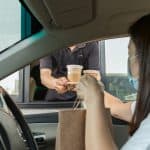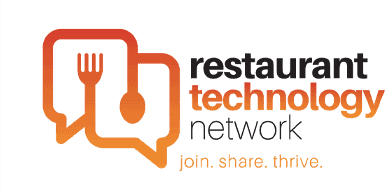With the advent of COVID-19, the drive-thru, in conjunction with takeout and curbside pickup, has taken on a new significance throughout the country.
But it’s not just a matter of traditional drive-thru anymore. Now “contactless” is the new watchword throughout virtually every service industry.
Here are some tips on how to successfully implement a completely contactless drive-thru.
The basics of contactless drive-thru
First things first. There are certain basic measures that should be followed to maintain your drive-thru and to ensure fast, efficient service to your customers.
As a first step, make a regular habit of actually visiting your own drive-thru as a test run to evaluate every step of the process and to catch any issues before they can become significant problems.
Some of the most important things to look for during your drive-thru test flight include:
- Appearance of the menu board and drive-thru window: Of course, it’s always important to maintain the appearance and state of repair of all aspects of your operation, but a worn, dirty, or otherwise unappealing menu board or drive-thru window area creates an immediate negative first impression—and one that may influence customers’ impression of the overall upkeep or cleanliness of your facilities. It’s also important to make sure your drive-thru station is fully stocked at all times. Time spent by employees tracking down basic supplies like straws, utensils, or condiments will only add to the waiting time of busy customers.
- Accuracy of the menu board: A menu board that doesn’t fully or accurately represent your current menu offerings is more than just a minor inconvenience. It can also detract significantly from the speed of service experienced by customers. If you’re out of stock of certain food items, those options should be removed from the board right away. An up-to-date menu board streamlines the ordering process and prevents your customers from being disappointed. If possible, invest in a digital menu board so you can make changes to items and pricing immediately, accurately, and efficiently.
Incorporating digital contactless tools
Today, many guests want to order ahead even if they’re going through the drive-thru, making mobile menu browsing an important tool for both quick-service and fast-casual restaurants. Contactless payment options are also a must.
OneDine’s solutions allow guests to easily browse the menu, order, and pay right from their mobile device without having to wait in line or shout into a speaker through their window, and without having to exchange cards, cash, or receipts.
Not only is unnecessary contact eliminated and service streamlined, but guests can also receive customized recommendations by inputting their dietary preferences, favorite cuisines, dishes, spice levels, and more—all with no app required.
General safety protocols
In a post-COVID world, even those who never before gave such things a second thought may have evolved into confirmed germaphobes. If these customers (and customers in general) aren’t convinced that your establishment is clean and sanitized, they’re simply going to eat somewhere else. It’s no longer enough just to have sanitary facilities and to follow the appropriate guidelines. It’s also vital that these compliance and sanitation measures are readily evident to a wary public. Customers want to be able to see that you’re keeping things sanitary. Visible sanitation measures are the new normal.
Some steps you can take include:
- Cashier shields: Cashier shields at your drive-thru windows serve two purposes. They not only provide a protective barrier between your employees and guests, it’s also a visual reminder that you’re serious about health and sanitation.
- Face masks: Whether face masks are a state regulation or just a recommendation for restaurant employees in your area, most customers will feel more secure seeing your staff wearing protective masks as they prepare and serve orders.
- Online ordering: Allowing customers to place their order directly from your website or through an app in order to pick it up at the time of their choosing cuts down on wait times, while also giving them the ability to conveniently order on a wide variety of devices from any location.
- Touchless payment methods: Accepting touchless payment methods speeds up your drive-thru waiting time and also helps avoid direct hand contact between staff and customers. Options include setting up a payment option on your online ordering platform or using a tap-to-pay terminal to touchlessly receive payment from cards and mobile phones with a simple wave or tap over a contactless terminal. Scan-to-pay options are also available, which allow a guest to scan a QR code from either a receipt or a tablet display that the cashier can hold. This then launches the payment sequence from the guest’s phone.
Ready to implement contactless technology at your restaurant? Schedule a OneDine demo today!





